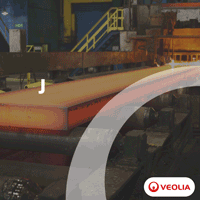Research Breakthrough Could Make Additive Manufacturing with Steel More Feasible
10/31/2017 - U.S. researchers have developed a method for printing three-dimensional stainless steel components that are as strong, if not stronger, than those made through traditional methods.
The researchers at Lawrence Livermore National Laboratory, Ames National Laboratory, Georgia Tech University and Oregon State University said their method for printing components could make more common printed components for use in demanding environments, such as those in the aerospace, automotive and oil and gas sectors.
The problem the researchers were able to overcome is the inherent porosity in printed steel, created as a laser fuses metal powder. With greater porosity, components are more susceptible to fracturing, making them less suitable for use in harsh environments.
"In order to make all the components you're trying to print useful, you need to have this material property at least the same as those made by traditional metallurgy," said Lawrence Livermore materials scientist Morris Wang, the lead author on the research.
"We were able to 3D print real components in the lab with 316L stainless steel, and the material's performance was actually better than those made with the traditional approach. That's really a big jump. It makes additive manufacturing very attractive and fills a major gap," he said.
You can read more about their breakthrough here.



-(220-x-200-px)-(130-x-130-px)-(220-x-200-px).jpg?lang=en-US&ext=.jpg)
.gif?width=200&height=200&mediaprotectionhash=ddb07947ad3b4ab959a83714461eccd5c6895f370695eb035a9ff7aa736f8ad9&ext=.gif)





